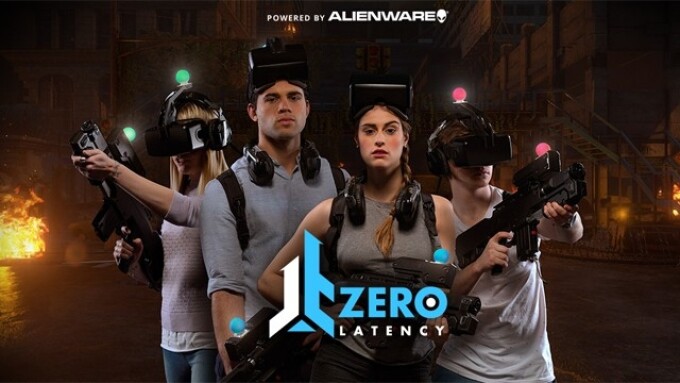LOS ANGELES — As technologists, forward-looking marketers, content producers and consumers alike seek to unlock the future of Virtual Reality, intriguing new products and services are coming to light.
It is often said that when it comes to entertainment technology, porn drives progress. That may be an overstatement, but the marriage of porn and technology is absolute, and with the rapid advances being made on the Virtual Reality front, it behooves adult entertainment professionals to keep an eye on the newest technologies, their implementations — and the consumer expectations they ultimately drive.
In other words, by studying how mainstream companies are bringing the VR experience to consumers, adult entrepreneurs can not only find inspiration, but also ensure that the quality of their offerings will match what they’re customers are getting elsewhere — a cornerstone for any recurring content sales.
One new mainstream VR offer that is worth noting is Zero Latency, a North Melbourne, Australia-based facility billed as “the world’s largest VR attraction,” which is set to open on August 15, offering a violent trip through an immersive, zombie-filled wasteland.
“The big question has been when these [VR] prototypes and concepts launch for public consumption, will the experience live up to the hype?” wrote Bennett Ring for CNET. “Zero Latency is one of the first ventures that will put mainstream viability to the test.”
While there will be no end of zombie-centric “shoot ‘em ups” coming to the VR realm, Zero Latency is distinguishing itself by eschewing the projected legions of couch-bound home headset wearers, and instead offering a hybrid real/virtual life experience — where up to six players roam an expansive 4,300 square foot warehouse space, wearing an Oculus Rift DK2 VR headset and headphones controlled by a backpack-mounted Alienware Alpha PC, while toting a five-pound PVC rifle for game play. This weapon has machine gun, shotgun and sniper modes, a button for magazine reloads, and front mounted pump action for grenades and shotgun blasts. A virtual laser sight makes targeting easy.
The venue is skinned in a grid pattern for more accurate camera monitoring of the players’ movements, with nearly 130 PlayStation Eye cameras providing 360-degree coverage. A glowing, colored ball atop the player’s headset serves to identify individual players.
Powered by the Unity game engine, the Zero Latency experience offers players an hour-long cooperative battle for around $65 per person. The development team is also reportedly eyeing adversarial combat — where the players fight against each other.
Ring notes that the physically exerting Zero Latency experience is vastly different than the typically static VR viewing experience that most consumers will have from the comfort of their homes.
“It’s the best virtual reality experience I have ever had, and I have tried them all,” Ring explains, adding “It’s not entirely perfect though — the Rift DK2’s mounting straps aren’t ideal for such a physical VR experience, and I had to readjust the headset every few minutes to line up the viewing sweet-spot.”
“If this is day one of the VR revolution,” Ring concludes, “I can’t wait to see where we are in a few years.”
Zero Latency is the kind of “thinking outside the box” that provides a competitive advantage in what will evolve into a very mature marketplace, and serves as a good example for adult operators seeking unique opportunities in VR.
For more information, visit ZeroLatencyVR.com.







